from Defend the Atlanta Forest
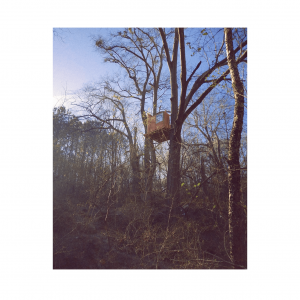
They say Atlanta is a city in a forest. What happens when cops, developers, and Hollywood team up to decimate some of the very woods the city claims to treasure? In the last year, a widespread and diverse movement has sprung up to Defend the Atlanta Forest from a secretive proposal to build a police training facility, flanked by a movie soundstage, in a wooded parcel in southeast Atlanta. In this interview from January 30, just days after a major action ending in a handful of arrests, we speak with two participants in the movement about its origins, tactics, and insurgent vision. Their story is of getting ahead of the media, outsmarting the cops, and coming to know the woods through the struggle.
Tell us what happened on Friday, January 28.
P1: On Friday, there was a march to defend the forest. About sixty people gathered at Intrenchment Creek Park, which is the public part of the forest that’s under threat. People marched through that forest onto Constitution Road, which goes through the forest, and then into the Old Prison Farm, which is the parcel of land that the city is trying to turn into a police training compound. Protesters were looking for the active construction crew that was out there. There hasn’t really been so much active construction on that site until about a week and a half ago. Eventually, protesters confronted a few workers with a boring machine collecting soil samples. Police from DeKalb County were there guarding them. After a brief confrontation, police started snatching people, and more or less the march dispersed. Four people were arrested and the rest of the crowd navigated their way out of the forest.
How did the struggle begin? Who exactly are you defending the forest from? Who’s running these boring machines?
P1: The struggle to defend the forest started before Defend Atlanta Forest was coined and emerged as a movement. There were three separate campaigns happening for years in the same region, which is along the South River in southeast Atlanta. One is this effort to preserve Constitution Lakes, which is a public park adjacent to the parcels of land that we were just talking about, Intrenchment Creek Park, and the Old Atlanta Prison Farm. In Constitution Lakes, there was an effort to develop trails and preserve the wetlands there that was spearheaded by a local artist. There’s also the effort to save the Old Atlanta Prison Farm from development, and that was its own campaign. Save the Old Atlanta Prison Farm, the formal campaign, was sort of spearheaded by just a couple people as well. After it was revealed that Blackhall Studios was going to try to purchase Intrenchment Creek Park and swap it for other land parcels in DeKalb County, there was also an effort spearheaded by a few other people to, in their words, “Stop the Swap.” To clarify, the city wants to give the park to the developers from the movie studio in exchange for the parcel of land they already own, and have already destroyed, because that land is no longer useful for them. So it’s a disgrace.
Those campaigns to stop it did work together, but they didn’t have a coherent sort of fight. They separated out each of their struggles. So when we learned that the Atlanta Police Foundation was intending to turn the Old Atlanta Prison Farm—adjacent to both Intrenchment Creek Park and Constitution Lakes—into a police training compound we decided we needed to do something. We saw that this was something they were announcing internally, but they hadn’t made a big media push about it. They were actually trying to call it the “Institute for Social Justice” or something absurd like that in their early video promotion. We also recognized that there was a systematic but sort of patchwork destruction of the forests in southeast Atlanta through condos and other sorts of development emerging in the area. That all put this zone of the city, which is one of its most ecologically diverse and crucial zones, at risk. Defend the Atlanta Forest emerged in order to respond to all of these incursions into the forest and onto South Atlanta. It started out by trying to articulate that all of these things are tied together. Essentially, they’re not separate struggles—there’s something that affects them all. That the police, that Hollywood, and that development and rising rents and gentrification in the city are a part and parcel of the same general process of securing profits for the big corporations, the government, the businessmen, etc.
The first week of action that happened in June 2021 was sort of the big emergence of the movement. After that there was a massive push against the City Council to refuse to lease the land to the police foundation to build the training center. There have been encampments, innumerable direct actions against the city and contractors involved, a second week of action, and now tree-sits.
We preempted the announcement of the police training facility by naming it “Cop City,” and that sort of got ahead of the rest of the struggle. One of the things that we’ve tried to do the entire time is get ahead of what we anticipate from past experiences, from our knowledge of how this type of development works and what it relies on. In 2021, we really emphasized people being present in the forest, pushing people to go be there and become familiar with it. In the last few weeks, as there’s been this initial surveying work—it’s not construction, but it destroys huge swaths of the forest—we know that many dozens of people are more familiar with the territory and how to move through it than there had been a year ago.
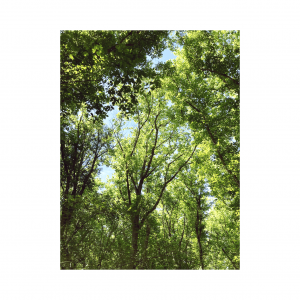
To reiterate something I heard you say: there were already these different ways that this space was coded, and then folks were encouraged to go and actually live there. It reminds me of the ZAD strategy where folks squatted condemned farm houses and began cultivating the land. How have you managed to re-territorialize the space? You mentioned some of the things you built. Are people actually living there? What does the forest look like to you now?
P2: One thing that we always understood, and maybe this just speaks to how the movement has grown, was that because the forest is in our neighborhoods and part of our lives—to an extent it was already, but we’ve consciously made it more a part of our lives—there was going to be some kind of exchange with the forest that didn’t look necessarily like a fixed occupation. That is still true now, and for many of us who live here, we circulate through the forest and have tried to make the pattern of struggle look like this as well: circulating through the forest and having an exchange with it and making it part of a pattern of our lives, rather than necessarily staying there in a fixed and permanent way. That’s part of how we understand it. The forest is the city but the forest is also within the city, so there’s a sort of rhythm with it.
P1: It’s winter, so there’s not as much activity in the forest right now. But because of gentrification in the city, the DIY scenes, like the music scenes, have lost a lot of the spaces that they depended on. As a result, because of overlapping networks, the forest became kind of a regular site for shows and parties. So when people in the DIY scenes need a venue, they just do them there. That didn’t exist before the movement.
That’s part of why we’ve encouraged a lot of different types of participation. We don’t direct people to participate in any particular way, so we often meet people we’ve never seen before in our lives organizing ecological walks or organizing massive parties in the forest. People have a lot of freedom to interact with the forest in ways that make sense to them.
As far as mapping and coding, we’ve named landmarks within the movement, within the forest, that we use as internal reference. If you’re a person who’s in the movement who comes to the forest, you come to know these landmarks. This is the type of thing where it feels really clear that it’s “ours” in ways that can’t be understood by enemy forces trying to get in there. There have been trails marked throughout, different types of maps made that people use to navigate the land. We’ve developed understandings of and ways to refer to things within it. For example we all know the landmark that’s been named “Big Mama,” a massive cherrybark oak tree near Intrenchment Creek. She’s actually been recently declared a “champion tree,” because trees of her species and size are rare in Georgia. Near to Big Mama is also “The Living Room,” a pine clearing in the public park side of the forest, named so because it’s free of undergrowth, pleasant to sit and gather in, so it’s become the frequent site of dinners, bonfires, gatherings, movie screenings, performances, art installations, and skillshares.
Tell us a bit more about Atlanta itself. What’s the city’s culture like? How is the forest related to the city itself?
P1: Historically Atlanta is a Black cultural Mecca, but over the past ten years or so there’s been pretty aggressive gentrification in the city. Movie and TV production and the general relocation of that industry and its tens of thousands of high-paid workers into the metropolitan area, the speculative real estate connected to that, university expansion and the role this plays in so-called “urban renewal,” investments tied to the airport and Delta, tech industry expansion including by Microsoft and companies like that—these are all huge factors that have played the leading role in gentrifying the city, building on a process of restructuring and austerity that began in the leadup to the 1996 Olympic Games. The city is changing rapidly, and that includes a huge influx of high-paid workers, investors, white consumers and business owners, and a completely new layer of landlords and international property management companies. In many ways, it mirrors patterns occurring all over the world, but there are not even social democratic checks or controls on, for instance, the displacement of historical—largely Black—residents, rent controls, tenants rights, or anything of that nature.
P2: It’s considered to be the new Hollywood in a lot of ways, and with the reorganization of the economy since the pandemic and the uprising, Atlanta is one of the cities in the South that has had an influx of people moving to it from all across the country. People are fleeing other cities and moving to the South. That’s one of the dynamics here. People are leaving LA, California in general, and also the Northwest—because of work, but also because of wildfires and environmental pressures in general. Atlanta is a city of trees and has a political culture around trees and respect for trees in a way that I still don’t fully understand as a newcomer here. But I know it extends back about fifty years, to a time when there was a conscious effort to plant trees in the city in the seventies. It’s a part of the culture here where natural life is acknowledged in a political way I haven’t seen in other cities I’m familiar with.
P1: The catchphrase is that Atlanta is a city in a forest. So obviously this is a big talking point for the movement, as the Atlanta Police Foundation, with the help of Reeves Young, their construction contractor, are trying to destroy the largest “green space” in the city.
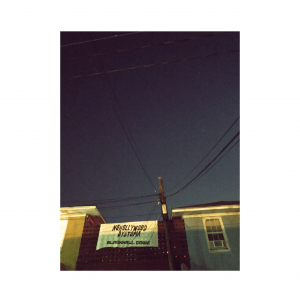
How have the police and press responded to you? What has the opposition been like?
P1: The police generally have been pretty hands-off. The first arrests that happened in the movement happened on Friday, just two days ago. More recently, if people are caught on the Old Prison Farm partition of the forest, they’ve been cited for trespassing, or they’ve been detained and questioned, but no one’s been arrested until now. Generally, the police presence in the forest has been almost null.
P2: They are on the back foot. The movement emerged prior to any official announcement of the intention to build the police training compound. You would have had to search to find out that this was what they were planning to do with the space. The movement preempted the announcement, and since then both the police and the politicians in the media have been trying to play catch-up, trying to correct the narrative we established. Right now, there’s a bit of a reckoning moment because the Police Foundation has the lease to the land and they feel more entitlement to the space, and so the construction is actively moving forward. It definitely seems they have been reacting to what the movement puts forward.
The police here are generally pretty hands-off in regards to political events or movements. The summer of 2020 was novel insofar as the police had to take their gloves off because it was so out of control. But generally if there’s a protest or something, a lot of times you won’t even see the police there. They’re always there—there’s ten cruisers two blocks away—but it’s not like the NYPD where they’re marching with the crowd.
P2: Even when they evicted the camp in early December, the police escorted DeKalb Parks and Rec. So it was the county Parks and Recreation Department that was doing the actual eviction, lightly enforced by police presence. But there’s been minimal surveillance—as far as we know—or police interference with daily activity. And it’s been about ten months of regular, consistent activity in the woods, in both parcels.
P1: As for the media, the coverage has been a bit mixed. I would say there’s been a ton of favorable coverage from local or DIY news outlets. So much so that now almost always when the movement’s mentioned, it’s with the preface that the police training facility has widespread community opposition. But there’s been some clearly unfavorable articles that have come out as well.
P2: The main news outlet in Atlanta, the Atlanta Journal Constitution, has shared interests with the Atlanta Police Foundation. There are some people in the movement who put a lot of attention to the relationship between the mainstream media and the Atlanta Police Foundation and how they bolster each other. Like the rest of the country, there’s a ton of attention to the alleged “crimewave” that seems to suggest that even more resources should go to the police. There’s a lot of attention to those narratives that indirectly support the police training facility, because Cop City has become so controversial.
Tell us the story of the forest before the struggle broke out. The ecosystem in Atlanta is really rich, and the idea that there’s already an interpenetration of the urban and the rural in this particular place is really interesting.
P1: It was a dairy farm at some point, and then it was turned into a Prison Farm in the early 1900s. There are also some really old trees, but a lot of it is new growth from within the last twenty-five to seventy-five years or so. This forest is really crucial for the climate resiliency of Atlanta. This is what is remaining of the growth that has emerged since it was farmed by prison labor. We have to grow the forest and not just save or defend or protect this part of the forest. But it’s also a place of deep historical traumas connected to deliberately racialized legacies of brutality and expropriation. This forest, and the rest of the city, was Muscogee (Creek) territory before the forced relocation of the tribes in the 1830s.
P2: Moving forward, it’s really important that the violent legacy of this land be broken. Building a police training facility there continues this legacy. The existing prisons and juvenile detention center that are still operating on the edge of the historic prison farm site continues this legacy. Everything sacrificed to social control, everything that needs to be hidden away from society is put into this zone—but this is one of the zones that is most beautiful and abundant, full of natural life. It’s also a place that attracts the uncontrollable aspects of urban life. You can go to the woods, and the police are afraid to go in there; it’s sort of haunted. You can be there and it’s quiet, you can’t see what’s happening forty yards from you. The South River forests are the most ecologically important zones in Atlanta according to the city’s own analysis and they had a big proposal to turn it into protected parks in an “eco-corridor.” But they’ve given that all up to carve it up and turn the forest into Amazon distribution centers, movie soundstages, and literally locking children up on the periphery of the proposed Cop City ballistics field.
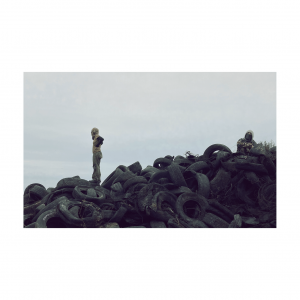
It seems important that you’re specifically targeting a police training facility, which links this struggle to the George Floyd Rebellion too.
P1: Obviously from the city’s perspective, this project is linked to the George Floyd movement. It’s obvious from our perspective as well, but from the opposite point of view. City officials explicitly talk about police morale declining when they talk about this project, they talk about the rise in crime, so on and so forth. On the other hand, we think that trying to build a state of the art police training compound in the wake of one of the biggest anti-police movements in US history is unconscionable. But that’s their answer to the economic crisis most people are faced with right now, and so there’s a crisis of livable existence. To me, this is a response to the George Floyd Uprising, but it’s also an anticipation of what continued climate change will look like. Their only answer is more police, and so the only answer that they can give to all the problems of the city is more police. For middle class and wealthy people, the only answer is more bad entertainment, more Netflix, more isolation at home to watch the things that Blackhall Studios produces to distract you from what’s happening outside. And so, in response, our message has been: “go outside, go be in the forest, let’s stop this thing.”
P2: The trajectory of the struggle is also entirely different from the George Floyd Uprising. It’s just on a totally different scale. There is a dynamic between the direct activity in the forest and the petitioning of the city, and there’s a rhythm between the two in the struggle that helps people involved in the direct activity get some rest. Some people prioritize the physical defense of the forest, the physical presence of people in the forest, and then other people have focused on petitioning city officials to try to stop the project. There’s also been a lot of pressure on contractors involved in the project. There was a demonstration at the Reeves Young office—one of the main construction companies—and there’s kind of a continuous effort to put pressure on those contractors. Until the past week and a half, none of that direct pressure on contractors happened in the forest. It was all in the suburbs, with folks showing up at offices, peoples’ houses, and so forth.
P1: In response to the backlash, they’ve tried to make Cop City into a public park. They want people to come interact with the police and they think that people will want to walk their dogs next to SWAT training, which is actually already happening there. There’s a police firing range within the forest where they have a school bus that they shoot up. You find teargas canisters all over the forest. They present it like they’re going to have massive amounts of green space preserved, like it’s going to be eco-friendly. Those are the external presentations. It’s a big spectacle. It’s funny, because it was obvious when they first announced it that what they wanted to do with the facility is regionally train police to prepare for urban uprisings and to practice movement through cities and things like this. That’s what they need to destroy the forest to build a facility for. And for us, we’re learning to move through the forest, a different type of terrain, in order to respond to them.
So where do things stand now? Tell us a bit about the current situation.
P1: They have not started construction on the police training facility as of yet. They’ve done a lot of the work that they need to do to start construction, but it’s just preliminary work. In that sense, the movement is very young and potentially has a long future ahead of it. They haven’t started anything on the Blackhall Studios project either yet. They could clear cut 170 acres whenever they want to, but they’re held up.
For us, we have engaged with this as something we know will be a long-term struggle. We know it takes years for these projects to begin. When there’s opposition, it causes delays and slows them down and makes them more costly. That is something we’re seeing now. It throws investments into question and all of that. We’re approaching year two now of the struggle and I think that it has become something of a staple for a lot of people.
Right now the movement is kind of small, but the size fluctuates. There are a lot of people who’ve been a part of it at some point in time. Many people have circulated through the movement and they may return one day. Prominent members of Atlanta Bike Life have made propaganda videos for the movement. The DSA has been involved. Anarchists have been involved. City elections were decided partly based on the forest issue—there were changes and politicians lost their seats. So even city politicians have been involved.
There’s no central coalition or something like that, but the amount of different people who have participated in the movement is notable. And it’s because it was established as a movement without definition, at least without a certain definition. It allowed as many people as possible to act however they saw fit and it gave an avenue and a platform for them to do that, for example through the calls for weeks of action or the calls to be in the forest. That said, I think there is a general desire to also produce something new, something more than just the sum of its parts.
So there are different groups, entities, people, and institutions that are all getting activated, recombined, and now being coordinated in a new way through the struggle. Does that seem like a generative thing, like the composition now will make other things possible in the future? It’s a little bit speculative, but we think about the Zapatistas for example. The Zapatistas are a really advanced kind of landback struggle, so to speak, or an eco-defensive struggle that is territorially situated. And now they literally just infuse other movements with their energy. I’m sure it’s a little early to say that that’s what’s happening here, but what you’ve described sounds super exciting and so I’m imagining that it feels good to people to be a part of it. There might be new ways for people to relate to this moment as a memory they carry forward with them in some kind of way.
P1: Absolutely, that was a big piece for us. We wanted people to have meaningful experiences, especially coming out of many people’s initial introduction to direct action, like the George Floyd Uprising. That’s a bar that’s just so extremely high, but having new types of experiences in the forest is healing and really potent. It’s really important for feeling connected to the city and to the land that you’re defending. When you choose to go sit in a tree you know what that feeling is, so lots of people circulating through the forest and struggling together is a big thing. We didn’t want the movement to be singularly contingent on the success of defeating either of these projects, rather we wanted it to be about defending the city in the long-term. The livability of the city—not just in the face of climate change, but in the face of development and in the face of the police. That’s a long-term struggle.
Thanks so much for talking to us. Is there anything you want to add, anything we missed?
The movement has grown organically—because it asks that you come be in the woods, and when you’re there, you see and know how important it is to fight for the forest. There are deep roots across the city among people who have been fighting beside one another for decades. Their project has no legitimacy. We don’t need more policing training and we do need more forests. For now, more people will continue to inhabit the forest in new ways and to expand and experiment with different ways of defending the space. Many different efforts are being pursued, from direct action to media and legal avenues. There’s momentum in all these directions and there’s respect among the movement for different approaches. We’re excited about the potential in the movement and what the future holds. This is a new type of struggle and I believe that we will win.
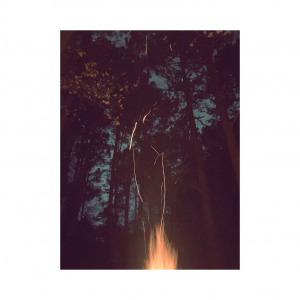
Contact Info:
@defendatlantaforest on Instagram
@defendatlforest on Twitter
https://t.me/DefendtheForestATL on Telegram
defendtheatlantaforest@protonmail.com
